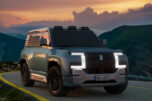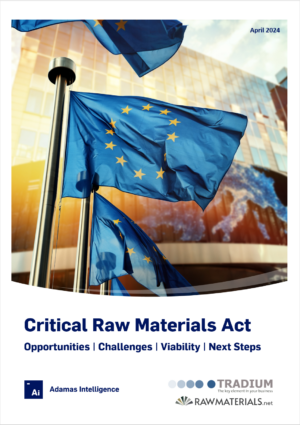Top 5 EV makes by cobalt deployed

Cobalt deployment up by a third over 2022
From January through November 2023, a total of 50,170 tonnes of cobalt were deployed onto roads globally in the batteries of all newly sold passenger EVs (BEVs, PHEVs and HEVs) combined, 33% more than the same months the year prior.
Tesla led the pack with 5,214 tonnes of cobalt deployed globally during the first 11 months of last year. Tesla outpaced overall growth, expanding cobalt deployment by 51% compared to the same period in 2022.
Second place went to the GAC, which saw an impressive 83% increase in total cobalt deployed year-on-year, reaching 3,086 tonnes over the period.
Among the top 10 in terms of cobalt deployed, GAC expanded at the second fastest rate behind Li Auto. Cobalt usage at Li Auto, which manufactures plug-in hybrids only, surged by 272% year-over-year, placing it ninth.
Batteries fitted to Mercedes Benz vehicles sold from January through November 2023 contained a combined 2,614 tonnes of cobalt, up 48% year-on-year.
Volvo, at 2,447 tonnes, ranks fourth after a 53% year-on-year increase. Rounding out the top 5 is BMW with 2,420 tonnes rolled onto roads, an increase of 55% year-on-year.

Adamas take:
Despite an 8.5% rise in the average EV’s pack capacity (i.e., kWh) over the first 11 months of last year, the global sales-weighted average amount of cobalt deployed per EV declined slightly to 2.9 kg over the same period owing predominantly to the rising market share of cobalt-free LFP (lithium-iron-phosphate).
In the case of PHEVs more specifically, average pack capacity jumped 29% over the first 11 months of last year while the global sales-weighted average amount of cobalt deployed per PHEV fell 2%, further evidence that EV makers continue to opt for LFP batteries, as well as high-nickel ternary batteries, as part of efforts to thrift out the most expensive and conflicted battery metal.
EV, Battery and Battery Materials Market Intelligence:
EV Battery Capacity and Battery Metals Tracker
Building on ongoing EV registrations in over 110 countries, our web-based platform helps users track monthly deployment of battery metals and materials, battery capacity, and the ever-evolving competitive landscapes of battery chemistries and cell suppliers.
EV Battery Capacity Monthly
The ‘EV Battery Capacity Monthly’ is a subscription-based report for tracking monthly deployment of passenger EV battery capacity by EV type, region, country, make, model, cell supplier and cell chemistry on an ongoing basis.





